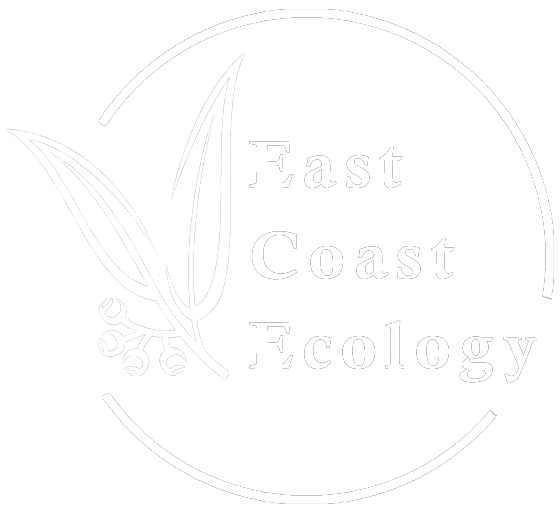
Environmental Impact Assessments NSW
What is an Environmental Impact Assessment NSW (EIA)?
An Environmental Impact Assessment NSW (EIA) determines the impacts of developmental plans, projects, policies, and programs on a natural environment. The Environmental Impact Assessment involves professional ecologists to predict and prevent harm to threatened species and threatened ecological communities at risk because of the proposed action.
The EIA assesses the possible impacts that can occur throughout the project's entire lifecycle, from the start, to post-project implementation.
Producing an Environmental Impact Assessment report is critical as it follows the State legislation, NSW Biodiversity Conservation Act 2016 (BC Act) and Biodiversity Conservation Regulation 2017 (BC Regulation). The legislation aims to minimise environmental impacts and address any residual impacts that remain after measures to prevent impacts on biodiversity have been applied.
The EIA report submitted to Council with the Development Application (DA) may require further environmental planning and assessment under the provisions of the BC Act, and all State Significant Development (SSD) submitted to the NSW Department of Planning and Environment will require assessment under the provisions of the BC Act.
Need an Environmental Impact Report?
Give us a call, send us an email or fill out the contact form and one of our experts will get back to you shortly.
PHONE: 02 7813 6119
EMAIL: admin@ececology.com.au
When is an Environmental Impact Assessment required?
An Environmental Impact Statement (EIS) NSW is required when proposing a development or industrial project could result in damages to the environment. There are various factors that influence the requirement of an EIA.
A project that is large-scale needs to be disclosed to decision-makers and the public before proceeding through an EIA and a Development Application (DA)
State-significant projects that are categorised as either State Significant Development (SSD) or State Significant Infrastructure (SSI) will require an Environmental Impact Statement (EIS).
If the proposed plan is located in or near a sensitive environment. This may include protected zones such as bushfire access areas restricted to any construction.
Here is a list of sectors that will require an Environmental Report:
Agriculture
Airport
Drainage and Irrigation
Land Reclamation
Fisheries
Forestry
Housing
Industrial
Infrastructure
Ports
Mining
Power Generation and Transmission
Quarries
Railways
Transportation
Resort and Recreational Development
Waste Treatment and Disposal
Water Supply
An Environmental Impact Assessment must be identified and conducted by a qualified ecologist or environmental consultant like East Coast Ecology. To understand the possible risks and potential environmental impacts of a proposed plan, work with the experts at East Coast Ecology team – we’ll provide a free consultation with an environmental impact assessor.
Why Choose East Coast Ecology?
East Coast Ecology is comprised of a highly qualified team of Ecologists, Environmental Scientists, and Bushfire Practitioners. As a team, we have helped clients successfully propose hundreds of Development Applications, State Significant Developments, and State Significant Infrastructure projects across NSW.
An Environmental Impact Assessment can only be prepared independently of the client by experienced consultants like the team at East Coast Ecology. At East Coast Ecology, we are fully qualified as accredited assessors and staffed by former Local Government Officers who understand the complexities of EIA guidelines and can assist in meeting local council expectations for your proposed project.
As environmental experts, we have professional knowledge of the State Biodiversity Legislations. We can provide expert information on environmental planning and assessment, predicting potential environmental impacts and how to mitigate residual impacts past the implementation process.
East Coast Ecology services all of New South Wales. This includes Western Sydney to Northern Beaches, Greater Sydney, Blue Mountains, Newcastle, Central Coast, Port Macquarie, North Coast, Shoalhaven, Eurobodalla, Hunter Valley, Wollongong, Illawarra, Southern Highlands, Central West, Yass Valley, Hill Tops, Upper Lachlan Shire, and the rest of regional New South Wales.
What are Biodiversity Impacts?
Development-related biodiversity impacts include, but are not limited to:
Tree or vegetation clearing for the proposed development footprint. Habitat loss and soil infertility can have detrimental environmental impacts.
As mentioned earlier, clearing of Asset Protection Zones (APZs) and any other additional bushfire access requirements are required to comply with Planning for Bush Fire Protection 2019; (covered further under bushfire services).
Likely construction process impacts such as noise, vibration or clearing for machinery access, material and waste stockpiles. These impacts can damage the homes of threatened species and ecological communities.
Road or driveway construction, installing services and stormwater infrastructure, on-site sewage management (OSSM) tanks and dispersal areas, and changes in hydrology. This type of development project can disrupt those who live within or near the location.
Indirect impacts on biodiversity include soil disturbance, runoff, wastewater disposal, artificial lighting, or increases in human activity and noise.
What Type of Environmental Impact Assessment do you need?
What Is Included in an Environmental Impact Assessment from East Coast Ecology?
The following is an example of what will be included in an Environmental Impact Assessment NSW from East Coast Ecology.
Client/Proponent details and Index
Executive Summary of the Environmental Impact Assessments NSW
Project description and alternatives
Legal considerations and environmental regulations applicable
Description of the physical environment
Description of the biological environment
Description of the socio-economic environment
Identification and prioritisation of environmental impacts
Environmental Management Plan
Risk Analysis and Contingency Plan
Cost Analysis – Environmental Benefit
Environmental Policy for the project and its regulations
East Coast Ecology will ensure your Environmental Report is prepared of a high standard, is easy to read, interpret and meet the expectations of the regional and local council.
Contact us
for a free quote
We would love to hear from you.
Give us a call, send us an email or fill out the contact form and one of our experts will get back to you shortly.
PHONE: 02 7813 6119
EMAIL: admin@ececology.com.au



